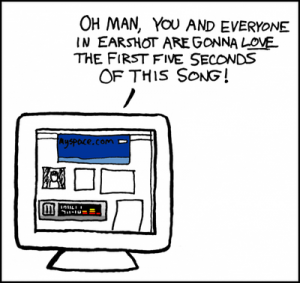Firstly, I would like to offer my appreciation that your company Magpie is trying to give Twitter users a means to earn money. At a time of economic worry and uncertainty, any company that offers a passive income stream should be encouraged. Sadly, your model is flawed.
Your modus operandi is to pay Twitter users to allow third-party advertisements to go out via their Twitter stream. The default setting is that every fifth Tweet will be an advertisement. That’s a lot. Yes, you mention that Magpie users can change the default setting to a less frequent schedule, but then won’t that be less effective for those looking to earn revenue from your service? After all, less adverts=less money, no?
So, let’s say for arguments sake that people leave the default setting of every fifth post. That’s 20% of someone’s Twitter stream taken up with advertisements. Looking at some of the people I follow, that could be anywhere between 60 and 5,000 advertisements. Don’t you think that’s a bit excessive? And that’s just on the default setting – what if people went with the suggestion on your homepage and lowered the settings to every other Tweet so they could earn even more?
Where your model suffers again is that you seem to have missed the concept of Twitter altogether. I’m sure you must have carried out focus groups and various forms of research to see what social media site offers the best potential for Return on Investment (ROI). Yet did you actually look at how the service is used and by whom?
Twitter acts as a wonderful way to have a two-way conversation and interact with like-minded individuals. Yes, there is self-promotion as people recommend their latest blog post but that’s a very small part of the Twitter experience. This is where Magpie falls down.
The key word here is conversation. Not broadcast. Not advertising. Conversation.
Where does the Magpie model fall into the description of conversation? Simple – it doesn’t. By paying users of your service to Tweet on behalf of your advertisers, you’re forcing followers of these people to read your adverts. In other words, you’re broadcasting. This is perhaps your biggest error with the Magpie model.
 Look around any social media-centric blog, website or even Tweet, and one thing that stands out loud and clear is that social media is all about the conversation.
Look around any social media-centric blog, website or even Tweet, and one thing that stands out loud and clear is that social media is all about the conversation.
Not the pitch. Not the shameless promotion. Certainly not the broadcast. If Twitter is about the conversation, and Magpie is all about the broadcast, can you see where the problem lies?
Perhaps where your biggest problem lies, though, is with the very people that will be using your service. While initially it will be beneficial to them as far as compensation goes, how long will this last?
Looking around Twitter conversations and the blogosphere, there is a lot of negativity towards Magpie’s business model.
Indeed, there is a groundswell that unwanted adverts could lead to people simply un-following Magpie broadcasters. This isn’t just a Magpie problem, in case you were thinking the negativity is unwarranted. I, and many like me, stop following people who shamelessly self-promote, because that’s not what we want from Twitter.
How many of your early adopters will continue to use the service if it means they are losing people they really want to connect with?
I know you’ve been following this conversation. My friend Lucretia M. Pruitt has started a very healthy debate at her blog and I noticed your comments there. It’s commendable that you’re taking the time to answer concerns – but unfortunately you’ve even failed here.
At no time have you offered an alternative to un-following someone. Maybe if you allowed the option to filter your ads out then there wouldn’t be such disillusionment with your service. But you can’t offer a filter, can you – if you do that, then who gets to see your adverts? And no company is going to pay you revenue to promote a product that doesn’t get seen.
As I said at the beginning, I do actually want to encourage any company that allows users of any service the chance to make extra income, especially with Christmas approaching. Sadly, I don’t think Magpie is the answer.
To use the Twitter message itself, “What are you doing?” – I don’t think the answer would be, “Buy your next car at Dealer X”. Do you?
Regards,
Danny Brown.














